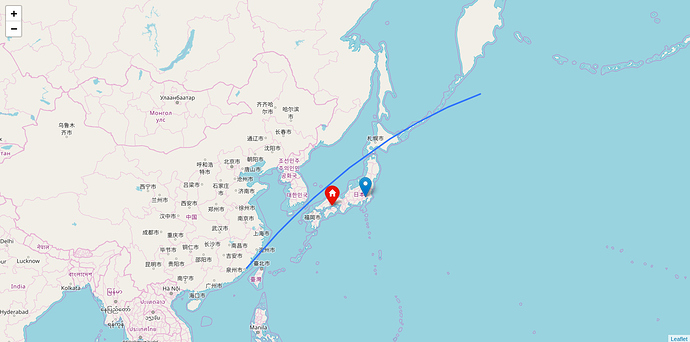Obie Elementary School, Kurashiki, Japan, direct via 8N4KLO
The ISS callsign is presently scheduled to be NA1SS
The scheduled astronaut is Ricky Arnold KE5DAU
Contact is a go for: Wed 2018-09-26 08:47:27 UTC 53 deg
One station was able to receive part of the contact:
- SatNOGS Network - Observation 261215 - Station: 191 - 7J1AJH
Map of the ground track, the above mentioned SatNOGS ground station and the contact site:
Congratulations and 73 to all!
More details about the contact from AMSAT-BB:
Click here for the details
An International Space Station school contact has been planned with participants at Obie Elementary School, Kurashiki, Japan on 26 Sept. The event is scheduled to begin at approximately 08:47 UTC. The duration of the contact is approximately 9 minutes and 30 seconds. The contact will be direct between NA1SS and 8N4KLO. The contact should be audible over Japan and adjacent areas. Interested parties are invited to listen in on the 145.80 MHz downlink. The contact is expected to be conducted in English.
More than 50 years have passed since the establishment of the Kurashiki Municipal Government was formed. The city now boasts over 65 primary schools. Obie primary school has a certain history and tradition that has formed over the last 144 years since its establishment.
The school area and surrounding community was founded during the Edo period when much of the land in the area around Kurashiki was being reclaimed. During this time, the Obie community was a village of small urban farms with many reticulated canals for rice paddy irrigation. Recently, the area has transformed into an urban residential area.
Obie is close to the city centre, about 4.5km from Kurashiki station, and about 3km from the local city hall. Infrastructure around the area is well designed. The Route 2 highway going east-west is just 150m north of the school, making the area accessible. Furthermore, connecting to the Seto-Chuo highway that runs from the main island of Honshu to the island of Shikoku is also possible.
The school has recognized a certain expectation from local residents regarding the school’s education and has a very positive relationship with the community through activities such as the school PTA gatherings and various local kids clubs.
Obie primary students are considerate, well mannered, and kind hearted.
Participants will ask as many of the following questions as time allows:
-
Japan has been affected by heavy rain and earthquakes this summer. Could you give us some advice about how to overcome problems?
-
How do you decide when it is day or night?
-
Why did you want to be an astronaut?
-
In 50 years from now, will we be able to live in space?
-
What makes you happy in your mission?
-
What makes you scared in space?
-
What language do you speak on the international space station?
-
How do you see a shooting star in space?
-
What’s the best thing about the earth when you see it from space?
-
What kind of exams and tests did you take to become an astronaut?
-
What do you want to eat when you come back?
-
How do you spend your free time?
-
What is your favorite space food?
-
Is your spacesuit hot?
-
What kind of training did you do?
-
What’s inconvenient in space?
-
What experiments do you do in space?
-
When do you want to go back to Earth?
-
How do you use the toilet?
[…]
About ARISS:
Amateur Radio on the International Space Station (ARISS) is a cooperative venture of international amateur radio societies and the space agencies that support the International Space Station (ISS). In the United States, sponsors are the Radio Amateur Satellite Corporation (AMSAT), the American Radio Relay League (ARRL), the Center for the Advancement of Science in Space (CASIS) and National Aeronautics and Space Administration (NASA). The primary goal of ARISS is to promote exploration of science, technology, engineering, and mathematics (STEM) topics by organizing scheduled contacts via amateur radio between crew members aboard the ISS and students in classrooms or informal education venues. With the help of experienced amateur radio volunteers, ISS crews speak directly with large audiences in a variety of public forums. Before and during these radio contacts, students, teachers, parents, and communities learn about space, space technologies, and amateur radio. For more information, see www.ariss.org, www.amsat.org, and www.arrl.org.
Thank you & 73,
David - AA4KN
